#Czech Cinematographer
Text
Lost ‘holy grail’ film of life in Brazil’s Amazon 100 years ago resurfaces
Documentary from 1918 that has been hailed as a classic emerges from depths of Czech archive

A long-lost Amazon documentary described as “the holy grail of Brazilian silent cinema” has been rediscovered nearly a century after it went missing.
Amazonas, Maior Rio do Mundo (Amazon: Longest River in the World)was stolen from the original director, Silvino Santos, shortly after it was made in 1918. Just over a decade later, it had completely disappeared. The film resurfaced earlier this year in a Czech archive and was identified by specialists in Italy and Brazil.
“It’s basically a miracle,” said Sávio Stoco, the Brazilian expert on Santos who confirmed the discovery. “We didn’t have the slightest hope that this work would one day be found.”
A Portuguese-born cinematographer who spent most of his life in the Amazon, Santos was one of the main non-fiction film-makers of early 20th century Brazilian cinema. He is best remembered for his 1922 documentary No Paiz das Amazonas (In the Country of the Amazons), which experts read as an attempted remake of his lost production.
Continue reading.
#politics#brazil#cinema#history#brazilian politics#amazon rainforest#mod nise da silveira#image description in alt
46 notes
·
View notes
Text
POPPER - JANUARY
This month has been full steam ahead for Popper! Where we are currently:
Popper will be the title for the film! If it ain't broke...
Socials have been made, headshots taken, and ready to start crowdfunding asap.
Script in on draft 3, close to being locked in!
Dates almost secured for shooting.
Casting has had callbacks--ready for confirming soon.
We have a cinematographer! Jacob Gandy, who has a wonderful website filled with their work, I am very excited to work with them.
Writing
Drafting Popper has been a challenge, as the story really is developing and unfolding as I draft, which I'm not that used to--previously I've been very sure of a story as I write. My meetings with Kate have been incredibly helpful; her insights and ideas have really pushed the project in the right direction, and helped me properly explore the themes I wanted to but struggled to find.
Current Important Themes in Popper:
Mother/Daughter Relationship
Male Dominance
Patriarchy
Isolation
Misogyny
I have never written a surrealist script, so I have been reading scripts and exploring surrealist art to inform myself. I had been writing my dissertation about surrealism and the Czech New Wave, so sometimes research doubled over which was handy. Films like Alice (1988), Daisies (1966), Cat in the Hat (2003), have helped me visualise my project, which I feel I'm doing far too much of -- visualising. I have found myself drifting my focus from the story when I spend too long imagining the film.
I also reread some of Barbara Creed's 'The Monstrous Feminine', and tried applying it to Popper. I have a mother character in the script, Audre's Mother, and I'd like to incorporate one of Creed's archetypes of women in film, the Monstrous Mother. Also the idea of the castration is relevant in Popper-- as Audre is a non-conforming female character, and therefore a threat to the male doctors at the clinic she visits. Audre is a real threat to the men in Popper, though she doesn't feel like it, as they force her back into the conforming corner, she did have power and individuality. If her Mother had supported her daughter, then the two 'monstrous' women would be a powerful force against the misogynistic men.
Additionally, I am trying to find visual metaphors to include. I want to explore thee idea that women becomes nothing but a vessel for life once they are pregnant. I want Audre to feel so unseen by the characters around her, pushing her isolation and the surrealist elements to the short. I just need the right way to do this.
Casting
Niamh (the producer for Popper) and I put together documents for casting, collecting scenes for specific characters as well as writers notes on the characters. Niamh put this on Facebook and we had lots of people interested! We had over 20+ interests in Audre, a few for Mother, Doctor and Johnny. We asked for self tapes, and those we got we filtered through and had actors for callbacks. We also had our actors from the test shoot re-audition.
Callbacks were in person, and were very daunting for me, as it felt very professional, thanks to Niamh! I hadn't held such intense auditions before, it felt kind of awkward to sit before actors, who am I to turn people down? Alas, I am the director, so I am that person. We saw some great people, and I honestly feel spoilt for choice right now, which Niamh keeps reminding me is a great position to be in. We hope to confirm cast this week, as well as dates too.
more updates to come! :)
3 notes
·
View notes
Text
In the previous ask I got about “folklorist VS literary studies”, right here, I wanted to include a metaphor to better explain - but I couldn’t find anything.
I think I got a comparison that could work, (I hope it will), and I will take the work of another fairytale blog (which if you haven’t guessed by my many reblogs of it, I encourage you to follow): @princesssarisa
Princesssarisa has been doing a “Sleeping Beauty Spring”, exploring the various movie adaptations of Sleeping Beauty. And by looking at these adaptations chronologically, they realized that despite coming from different eras, different cultures and different nations, the movies seem to have influenced or taken inspiration from one another. You can find this in two of their posts, one tying Faerie Tale Theater’s Sleeping Beauty and the Czech “How to wake a princess” (here) and one comparing the Cannon Movie Theater’s Sleeping Beauty to the 70s German version (here).
And this is a perfect metaphor what “literary” studies are trying to do now, in the modern field of university teaching and study.
To explain: we have several movies based on the same fairytale, “Sleeping Beauty”. Imagine that each movie is a fairytale, folkloric or literary in nature, and that the original fairytale is actually the “fairytale type” under which the various folktales and fairy narratives are classified.
The “folklorist” point of view had the idea that each movie exist in its own continuty, context and world, separate and isolated from the others. Each one exists as just an adaptation of the original story, without side-influence of any kind, and are just direct adaptations of the story. Which is a true and right thing to point out.
But what the literary studies bring is what is either an additional info, or a nuance to the discourse, elements that the “folklorist” point of view tended to completely ignore (due to being a blindspot): maybe some movies actually take inspiration from other movies that adapted the fairytale? Maybe there are some side-influence, and one movie will include reference or have similar elements taken from a previous cinematographic adaptation. Maybe it is not just all from just the original fairytale and the movie-maker’s personal ideas, maybe each movie shoudn’t be seen as a sngular piece completely isolated and cut-off from other cinematographic works of the tale.
Because this is what literary studies are trying to bring, and where they oppose folklorist studies. It isn’t about negating the existence of folklore, denying the utility of folkloric studies or saying that literary fairytales should be the only fairytales existing... But it is about considering that maybe not all versions are like the roots coming out of a same tree, each individual and from a common source. Maybe the “movies” have more in common than just “being inspired by the same tale”. It is about considering the history and evolution of fairytales not as an hydra growing more head, but more as a chain of narratives spawning out of each other, as a game of “Chinese whispers” (we call it “Arabian phone” in France) where previous versions of the tale influence and shape younger ones. And the “literary studies” are called as such because, in this point of view, the typical “point of view” of fairytales as a whole is flipped.
Because in folklorist-sided texts, the folktales version of fairytales, the oral versions, the “collected” tales have always the authority and the primary importance - folklorist-sided experts tend to believe that literary versions of fairytales are just like movie versions of fairytales, sort of unique “aside” to the history of the tale with no actual importance in the greater scope, knock-offs that ultimately cannot change or even touch the “core narrative” of the folktale. It is a whole logic fed on the idea that “lower class culture, oral culture, uneducated culture is always more primitive and more raw than literary, upper-class, educated culture”. This is why this side of the fairytale study tend to search for the “truth” in these folktales - by being folktales, they are deemed “primitive” and thus somehow reveal a primal, primary truth that predates literary fairytales.
The literary studies reverse this by considering that maybe literary fairytales did have an influence over folktales, that maybe literary works did end up changing or starting oral tales, by the virtue of said literary versions being much more widespread, studied and “popular” than folktales (as in, when a literary fairytale becomes so well-known and so published it becomes part of a country’s literature classics, part of a country’s popular culture and common references known by everybody, maybe it should be given more credit over how it influenced the perception of the tale as a whole).
Mind you, the literary vs folklorist debate is still a debate. Not everybody agrees with the recent change in study-method and historical point of view that happened, and many still stick with what was the recognized, respected and adored model of the 20th century. But I want to insist that, while I am on the literary side of the debate, I also strongly respect (and sometimes use myself) “folklorist-sided material”, precisely because the two are complementary and one cannot completely ignore the other. Heck, folklorist studies are what saved fairytales in France from losing their place as a prominent part of the country’s culture (well, this is more the psychoanalytic point of view of fairytale study, but given they are influenced by folklorists points of view, I’ll still credit them for that)
#fairy tales#sorry for hijacking your blog and your posts X)#but you were the perfect example#fairytales#folklorist vs literary#history of fairytales#study of fairytales#i hope this clarifies my pov#and if it doesn't then it is official I don't know how to write anything#though metaphors were never my strong point
7 notes
·
View notes
Photo
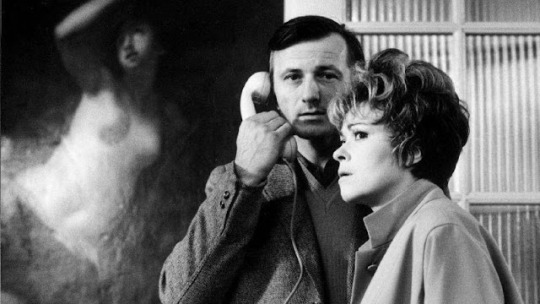
Radoslav Brzobohaty and Jirina Bohdolová in The Ear (Karel Kachyna, 1970)
Cast: Jirina Bohdalová, Radoslav Brzobohatý, Gustav Opocenský, Miroslav Holub, Lubor Tokos, Borivoj Navrátil, Jirí Císler, Jaroslav Moucka, Karel Vasicek, Ladislav Krivácek, Frantisek Nemec. Screenplay: Karel Kachyna, Jan Procházka, Ladislav Winkelhöfer. Cinematography: Josef Illík. Art direction: Oldrich Okác. Film editing: Miroslav Hájek. Music: Svatopluk Havelka.
The Ear is not only a fascinating bit of political history but also unnervingly relevant to these anxious times when a film about political paranoia can't help but touch nerves. Karel Kachyna was part of the Czech New Wave, filmmakers like Milos Forman, Ivan Passer, and Jiri Menzel who took advantage of a looser attitude toward dissent on the part of the Communist Party in mid-1960s Czechoslovakia. Unfortunately, The Ear was made toward the end of that period of relative tolerance, and it was suppressed by the government under pressure from the Soviet Union. It wasn't released until 1989, after the collapse of European communism. It turns out to be a remarkable portrait of a marriage stretched to the breaking point by political tension. Ludvik (Radoslav Brzobohatý) is a mid-level official in the Communist Party bureaucracy. He and his wife, Anna (Jirina Bohdolová) come home from a Party function one evening to discover an unlocked gate and other signs that someone has entered their house while they were away. When they also find that the phone doesn't work and the power is off, they suspect the worst: The Party has been snooping. They know the consequences well: exile or imprisonment at the least. They already suspect that their home has been bugged -- they call it "The Ear" -- all along, but figure that it was confined to their bedroom. Ludvik recalls events at the party they have attended and begins to put the worst interpretation possible on them, signs that he's about to be purged. To make matters worse, they haven't been getting along. Anna is an alcoholic and has had an affair. So as Ludvik begins trying to destroy papers that the Party might find incriminating -- burning them and flushing them down the toilet, to the point that he sets the toilet seat on fire -- Anna keeps up a steady stream of resentful accusations. Eventually, they discover that "ears" are everywhere: listening devices tucked in every nook and cranny of the house. Their rancor turns to mutual support and even affection. It turns out that Ludvik is not being purged after all: He's being promoted. But that only causes them to realize that their plight has worsened: If they were under surveillance before, how much more will they be subjected to now? The relationship of Anna and Ludvik has been compared to that of George and Martha in Who's Afraid of Virginia Woolf? but with the added political tension, and Brzobohatý and Bohdolová play it brilliantly. Cinematographer Josef Illik shoots many scenes as if lit by the candelabra Anna and Ludvik are carrying around the darkened house, creating a visual correlative for the uncertainty that surrounds the couple.
3 notes
·
View notes
Text

(—) ★ spotted!! BRIANNA 'BRI' NEWMAN on the cover of this week’s most recent tabloid! many say that the 36 year old looks like TESSA THOMPSON, but i don’t really see it. while the CINEMATOGRAPHER is known for being EASY-GOING my inside sources say that they have a tendency to be DETACHED i swear, every time i think of them, i hear the song LIABILITY by LORDE
BASIC INFORMATION:
name: brianna sasha newman.
nicknames: bri.
pronouns: she/they.
gender: genderqueer.
age: thirty-six.
date of birth: july 15th.
place of birth: seattle, washington.
astrological sign: cancer.
orientation: lesbian.
APPEARANCE:
height: five foot three.
hair colour: naturally dark brown, currently more dyed red.
eye colour: brown.
wardrobe style: whatever’s comfortable.
tattoos: various ( tba ).
piercings: earrings, nose, industrial.
HEALTH:
physical ailments: mostly deaf in one ear (wears hearing aid).
mental ailments: depression.
alcohol use: drinks socially.
drug use: smokes weed nearly every day, uses cocaine and/or mdma when partying .
addictions: drugs.
PERSONALITY:
positive traits: easy-going, disciplined, perfectionist.
negative traits: perfectionist, obsessive, impatient.
ACTIVITIES & SKILLS:
skills: animation, crocheting, piano.
weaknesses: any sports requiring hand-eye coordination.
languages spoken: english, ASL.
FAMILY:
father: andre newman ( alive, sixty - seven )
mother: denique fox - newman ( alive, sixty - four )
brother: name tbd ( alive, between 37 - 42 )
sister: name tbd ( alive, between 30 - 35 )
wife: ella burgess ( deceased, aged thirty - two )
CAREER/LIFE DETAILS ( tw vehicular death ):
1986: born to be the middle child of andre and denique newman in seattle, washington. her parents owned their own successful supermarket.
2004: moved to los angeles to study film at UCLA. in her high school years, she had made many short films with her friends and she was accepted with a scholarship after a thorough acceptance interview.
2007-2013: struggles to find work as a director after school and instead goes to work as a runner on movie sets, working her way up in the chain along the years, working with directors such as david fincher, ron howard, darren aronofsky and eventually working as an assistant cinematographer on gravity by alfonso cuaron.
2014: while on set, meets actress ella burgess, and they immediatley hit it off. they start dating soon after and after 8 months of dating, bri proposes with the promise that the day they are allowed, they will get married.
2015: she married her sweetheart ella the moment it was legalised, in a small, intimate wedding at an independent vineyard just up the coast. they went on honeymoon in europe, traveling through several different countries, including france, germany, spain, the czech republic and greece.
2016: not but 5 months after their wedding, bri is woken up in the middle of night by a call to her cell. she is informed that on her way back from a night shoot, ella was hit by another driver who had fallen asleep at the wheel. her world crumbles.
2022: bri has been going through the motions for years now, throwing herself into work. through therapy and support from family and friends, she is now exploring the idea of directing her own film, but is afraid to take the plunge.
WANTED CONNECTIONS:
colleagues: especially since the death of her wife, bri has thrown herself into work and has had few connections outside of that, so any colleagues would be fab.
honestly not sure will probs add more soon xoxo
2 notes
·
View notes
Video
youtube
Trailer for the new 4K restoration of Little Darlings (1980). The debut release from Vinegar Syndrome’s newest sub-label, Cinématographe.
Written by Dalene Young (The Baby-Sitters Club) and Kimi Peck, with lush on location photography by noted Czech cinematographer Bedřich Baťka (Marketa Lazarová), Cinématographe is proud to bring LITTLE DARLINGS to blu-ray and 4K UHD for the first time in the world, newly restored from archival elements and full of illuminating special features that tell the story of this contemporary coming-of-age classic.
(Holy shit.)
1 note
·
View note
Text
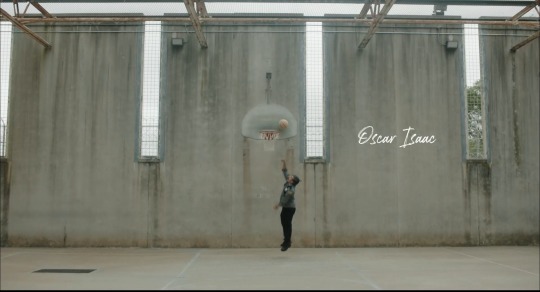
Movies I watched this Week #134 (Year 3/Week 30):
The Consequences Of Love, my 6th rewarding film by Paolo Sorrentino, an exceptional mature director. His usual collaborator Toni Servillo plays here a mysterious businessman, who's been staying alone for 8 years at a luxurious Lugano hotel. Rich, stylish and evocative. 8/10.
🍿
4 more by Buñuel:
🍿 The Milky Way, the first of his loose "Search for truth" trilogy, (together with the much better 'The Discreet Charm of the Bourgeoisie' and 'The Phantom of Liberty'). Some intricate heretic and blasphemous polemics against the church - and all believers. Clear inspiration to Jodorowsky. “Thank God I’m an atheist.” 5/10.
🍿 Re-watch: Tristana, a complex tragedy about the patriarchy, innocence, sexuality, obsessiveness and cruelty, offered as a simple soap opera. Fernando Rey is the decadent aristocrat who seduces his young niece, the deceitful Catherine Deneuve, who perversely rebels against this father-husband. That Mustache guard! The artificial leg laying on bed! The Don Lope Bell clapper! 8/10.
🍿 Robinson Crusoe, his first color film, and the first made in English, was a traditional re-telling of the famous story, with (few) subversive elements.
🍿 "...See you at the top, gumdrop..."
The young one (1960) was Buñuel's second film in English, an uncomfortable, disturbing drama, now considered to be one of his forgotten masterpieces. A tense and very disturbing story: A black clarinet player who is falsely accused of rape, finds refuge on an island off the Carolina coast. An unpleasant gamekeeper forces himself on a 13 year old innocent girl (who looks remarkably like Liv Tyler). The two men end up playing a bitter battle-of-wills game, full of tense and racist scenes. An odd morality play examining prejudices, racism and pedophilia.
🍿
The Letter Room, my first by Danish director Elvira Lind. She cast her real-life husband Oscar Isaac as a kind, mustachioed prison guard, who's assigned to go over the prisoners' mail. Ah, The American carceral system! The saddest film I've seen in a while. 9/10.
(Photo Above).
🍿
“Eat the watermelon - it’s yours now”.
Cameraperson, my second superb documentary by elite cinematographer Kristen Johnson (after her incredible 'Dick Johnson is dead').
Johnson shot dozens of films, and this personal collage is a collection of some of her background leftover titbits, establishing shots and related stuff from all over the world. Extremely powerful, even before she breaks out stuff from the most tragic and harrowing places around the world: Guantanamo, Sarajevo, Jasper, Texas, Kabul, Nigeria, Yemen and Mississippi. So much heartbreaks and suffering, told with so much restrain. "Donba!" 9/10.
I discovered this in a short Thomas Flight essay 'The Succession Character You Never See' which describes how important the invisible camera decisions are.
🍿
First watch: Closely Watched Trains, the groundbreaking Czech New Wave classic. Cute, light erotic story about Premature ejaculation and anti-Nazi resistance.
🍿
A mighty wind, another of (Baron!) Christopher Guest's comedy-mockumentaries, this time about a television reunion of three folk bands from the 60's. With a scary-looking Harry Shearer (who later transition into a female), and all the members of the ensemble that made 'Spinal tap', 'Best in show' and others. Perfectly charming. 7/10.
🍿
Loft, the standard 'Erotic thriller' from Belgium was the most successful Flemish-speaking film ever by 2008. 5 successful yuppies, duplicitous swinging dicks, own a fancy loft together, to which they bring their mistresses to. But they are all married, and claim to be faithful when in public. When a woman is found murdered in the loft, it's unclear who killed her or why. 3/10.
🍿
Nine Queens is considered as one of Argentina's greatest films. A crime thriller of two small time street hustlers, who cross and double cross everybody around them again and again. With 2 surprising endings, one of which is typically Argentinian (The bank suddenly defaults!). 5/10.
🍿
My 9th and 10th by Wes Anderson:
🍿 The Darjeeling Limited, a movie about designer suitcases; A visually-provocative but emotionally stunted drama about 3 irritating brothers on an exotic 'spiritual trip' to India. With the first (?) sex scene in any of his movies. All style, no substance. I don't know why I keep watching his films, when I find him empty and pretentious. 4/10.
🍿 Hotel Chevalier was a 12 minutes film he released together with 'Darjeeling', like a Pixar "Short". A prequel with some background about Jack Whitman and his ex-girlfriend. Like 'Prada: Candy', Anderson's perfume ad with Léa Seydoux, shorter is better. This is actually a perfectly little story with the same "Where Do You Go To (My Lovely)?" comment. 7/10.
🍿
The chase (1946), a second rate Noir by a second rate auteur. With Robert Cummings and Peter Lorre. 1/10.
🍿
The Beguiled, a moody Southern Gothic thriller by Sofia Coppola, about a wounded Union Corporal who was given shelter at a small girls school in Virginia in 1864. My second film about amputation this week (After 'Tristana'!). But the slow melodrama didn't speak to me at all.
🍿
In Ted Gioia's tribute to Tony Bennett, he claims that lounge-lizard Lou Canova is modeled after Bennett, at the lows of his career at that period. I haven't seen Woody Allen's Broadway Danny Rose since 1984. His cinematic personality as the 'nervous Jew' is highly-irritating. But Gordon Willis photography helped give the tight story 100% score on 'Rotten Tomatoes'.
Rip, Tony Bennett!
🍿
Fieldwork Footage is a 1928 short directed by Zora Neale Hurston. She was a central figure of the 'Harlem renaissance', an author and anthropologist and the first African-American female film maker.
🍿
I was sick for a day, so I watched Pineapple Express once again, the best action-stoner comedy ever? Convincing marijuana enthusiast Set Rogen against local mob guy Bill Lumbergh. It's a movie about escalation! Starts with weed jokes and ends with "Prepare to suck the cock of Karma" climax.
🍿
The Quiet American, an adaptation of Graham Greene Foreign Service Saigon thriller, with Michael Caine and Brendan Frazer. The two engage in a ménage à trois over a pretty Vietnamese taxi dancer. This is 1952 when the CIA is just getting into the war there. Cinematography by Christopher Doyle, Wong Kar-wai's usual collaborator. 3/10.
🍿
In the 1960's and 70's, the Montmartre Jazz club on Store Regnegade in Copenhagen was the center of world class jazz in Europe. Many of the greatest names in Jazz played there regularly. Miles Davis, Chet Baker, Ben Webster, Dexter Gordon, Sonny Rollins, Art Blakey, Muddy Waters, Dizzy Gillespie, Stan Getz, and of course the Danish bass player Niels-Henning Ørsted Pedersen. Blues for Montmartre is a nostalgic 2011 Danish documentary about the place and the people who frequented it. 9/10.
Here is Ben Webster playing Stardust in Montmartre in 1971.
🍿
Related!
That’s my jazz: Pastry chef Milt Abel ll reflects on his relationship with his late father Milton Abel Sr., a legendary Kansas City jazz musician.
Surprisingly, he went to work at Noma, and stayed in Copenhagen to open his own Danish-style bakery!
🍿
Just because I dislike science fiction as a genre, does not mean that I'm not ready to give it another chance every once in awhile (But always to be disappointed!). Gattaca seemed to be different: Dystopian bio-punk about eugenics with Gore Vidal and Ernest Borgnine... But I only lasted 30 minutes inside this shiny, sterile world: Pseudo-intellectual mambo-jumbo, horribly acted.
🍿
Throw-back to the "Art project”:
Adora with Buñuel.
🍿
(My complete movie list is here)
1 note
·
View note
Text
"They call me the ‘Uncle from America,’ as all our Y.M.C.A. men are called. … I am the proprietor and manager of the following enterprises: A soldiers’ club, with reading room, cinematograph, theatre, and buffet; a bakery, where rolls are baked for the men; a sausage factory, which turns out about four hundred pounds of sausage a day; shower baths, installed near the station; a travelling refrigerator car, which we keep running out to the front to provide the men with cold drinks and sausage; a theatrical troupe, which performs three times per week in the club, and which has a travelling theatre for the men at the front; a store for the wounded, a rest room and entertainment hall for the same; a traveling shower bath fixed up in a freight car, and general supervision of all the Y.M.C.A. work among the Czech-Slovaks."
--K.D. "Dusty" Miller, Princeton Class of 1908, in a letter to his class, July 21, 1918
1 note
·
View note
Photo

Organic grains and flares LOG C always on the win even when I pushed the ISO to nearly 3200 in this shoot. I wanted a natural noisey look and just stopped it down with some NDs from @tiffencompany . Featuring @karolinabosakova for @jk_klett . Shot this summer in the metro's of Prague, Czech Republic. . . . . . #markhobz #lovemyjob #arri #cinematographer #cinematography #commercial #czech #prague #alexa #alexamini #atlas #anamorphic #anamorphiclens #retro #fasion #czechgirl #red #skirt #redskirt #metro #subway #underground #europe (at Staroměstské Náměstí, Prague) https://www.instagram.com/p/CHnZ8nwlmQx/?igshid=1od8l8h794ouk
#markhobz#lovemyjob#arri#cinematographer#cinematography#commercial#czech#prague#alexa#alexamini#atlas#anamorphic#anamorphiclens#retro#fasion#czechgirl#red#skirt#redskirt#metro#subway#underground#europe
0 notes
Text
hangmen also die (1943) is a jewel of wwii film. the film was written and directed by german refugees fritz lang and bertolt brecht, and it is brilliantly laser-focused in its goal of inspiring a desire to punch nazis. there are many ways in which this film is comparable to casablanca (1942): it is set in a nazi-occupied city, in this case prague, and showcases the indomitable spirit of the occupied people while denouncing those who collaborate and sympathize with the nazis. unlike casablanca (1941), however, there is no cynically detached american presence in the film to distract from the brutal reality of the situation. unlike in that film, there is nothing comedic about the germans of this film. they are a ruthless, powerful presence, with their ability to destroy matched only by their desire to destroy. although the american audience of this film lacked the first-hand knowledge of the terror of the nazis that the director likely had, cinematographer james wong howe communicates that terror highly effectively. rigidly lineally framed shots show the orderly inevitability of violence of the nazis; skewed shots with overwhelmingly powerful shadows show how sickeningly great that violence truly is. this highly organized, deeply brutal force is contrasted with and met by the spontaneous, indomitable will of the czech people. time and time again, the nazis of this film attempt to break that will and fracture that popular identity. time and time again, they can hardly manage to chip off more than one turncoat. those betrayers end up betrayed by the ones they defected to, in the end. although i will concede that the visual and narrative mechanisms by which sentiment are aroused are fairly obvious, it makes them no less effective. a revolutionary song composed in prison and spontaneously sung in solidarity and revolt is performed by a choir at the film’s close—the end card reads in bold letters, “NOT the end”—and we the audience are encouraged to join in the terrible but noble struggle portrayed in the film. in visuals, in narrative, in acting, and in writing, hangmen also die (1943) is an absolute masterpiece, and perhaps the single piece of contemporary wwii film i would most highly recommend
#it’s like a spectrum#hangmen also die (1943) > casablanca (1942) > the third man (1949)#in terms of like. sentimentality. and also how much it makes you want to punch nazis#love the third man (1949)!! very very cynical film though#for all its darkness this film is Not cynical#ryddles
9 notes
·
View notes
Text
2022/08/09
La última obra de arte que visitamos era un cinematógrafo que proyectaba imágenes sobre una pared. Vimos a un primo búho.
The last piece of art we visited was a cinematograph that projected images onto a wall. We saw an owl cousin.
Google Translation into Portuguese:
A última obra de arte que visitamos foi um cinematógrafo que projetava imagens em uma parede. Vimos uma prima coruja.
Google translation into Italian:
L'ultimo pezzo d'arte che abbiamo visitato è stato un cinematografo che proiettava immagini su un muro. Abbiamo visto un cugino gufo.
Google Translation into French:
La dernière œuvre d'art que nous avons visitée était un cinématographe qui projetait des images sur un mur. Nous avons vu un cousin hibou.
Google Translation into Arabic:
كان آخر عمل زرناه هو تصوير سينمائي يعرض صورًا على الحائط. رأينا ابن عم بومة.
Google Translation into German:
Das letzte Werk, das wir besucht haben, war ein Kinematograph, der Bilder an eine Wand projizierte. Wir haben einen Eulencousin gesehen.
Google Translation into Albanisch:
Puna e fundit që vizituam ishte një kinematografi që projektonte imazhe në një mur. Pamë një kushëri buf.
Google Translation into Bulgarian:
Последната работа, която посетихме, беше кинематограф, който прожектира изображения върху стена. Видяхме братовчед сова.
Google Translation into Czech:
Posledním dílem, které jsme navštívili, byl kinematograf, který promítal obrazy na zeď. Viděli jsme sestřenici sovy.
Google Translation into Slovak:
Posledným dielom, ktoré sme navštívili, bol kinematograf, ktorý premietal obrazy na stenu. Videli sme sesternicu sovu.
Google Translation into Slovenian:
Zadnje delo, ki smo ga obiskali, je bil kinematograf, ki je projiciral slike na steno. Videli smo sovo sestrično.
Google Translation into Suomi:
Viimeinen työ, jossa kävimme, oli elokuva, joka projisoi kuvat seinälle. Näimme pöllön serkun.
Google Translation into Greek:
Το τελευταίο έργο που επισκεφτήκαμε ήταν ένας κινηματογράφος που πρόβαλλε εικόνες σε έναν τοίχο. Είδαμε μια ξαδέρφη κουκουβάγια.
Google Translation into Dutch:
Het laatste werk dat we bezochten was een cinematograaf die beelden op een muur projecteerde. We zagen een uil neef.
Google Translation into Norwegian:
Det siste verket vi besøkte var en kinematograf som projiserte bilder på en vegg. Vi så en uglefetter.
Google Translation into Polish:
Ostatnim dziełem, które odwiedziliśmy, był kinematograf, który wyświetlał obrazy na ścianie. Widzieliśmy kuzyna sowy.
Google Translation into Romanian:
Ultima lucrare pe care am vizitat-o a fost un cinematograf care proiecta imagini pe un perete. Am văzut un văr de bufniță.
Google Translation into Russian:
Последней работой, которую мы посетили, был синематограф, который проецировал изображение на стену. Мы видели двоюродного брата совы.
Google Translation into Turkish:
Son ziyaret ettiğimiz çalışma, görüntüleri duvara yansıtan bir sinematograftı. Bir baykuş kuzeni gördük.
Google Translation into Hebrew:
העבודה האחרונה שבה ביקרנו הייתה צילום קולנוע שהקרין תמונות על קיר. ראינו בן דוד של ינשוף.
Google Translation into Hindi:
आखिरी काम जो हमने देखा वह एक सिनेमैटोग्राफ था जो छवियों को एक दीवार पर पेश करता था। हमने एक उल्लू चचेरे भाई को देखा।
Google Translation into Indonesian:
Karya terakhir yang kami kunjungi adalah sinematografi yang memproyeksikan gambar ke dinding. Kami melihat sepupu burung hantu.
Google Translation into Malay:
Kerja terakhir yang kami lawati ialah sinematograf yang menayangkan imej ke dinding. Kami melihat sepupu burung hantu.
Google Translation into Japanese:
最後に訪れた作品は、壁に映像を投影するシネマトグラフでした。 フクロウのいとこを見ました。
Google Translation into Korean:
우리가 방문한 마지막 작품은 벽에 이미지를 투사하는 시네마토그래프였습니다. 우리는 올빼미 사촌을 보았습니다.
Google Translation into Chinese:
我们参观的最后一部作品是将图像投射到墙上的电影摄影机。 我们看到了一个猫头鹰表弟。
Google Translation into Persian:
آخرین اثری که از آن بازدید کردیم یک سینماتوگراف بود که تصاویر را روی دیوار پخش می کرد. پسرعموی جغد را دیدیم.
Google Translation into Tagalog:
Ang huling gawaing binisita namin ay isang cinematograph na nagpapalabas ng mga larawan sa isang dingding. May nakita kaming kuwago na pinsan.
Google Translation into Thai:
งานสุดท้ายที่เราไปเยี่ยมชมคือภาพยนตร์ที่ฉายภาพลงบนผนัง เราเห็นลูกพี่ลูกน้องนกฮูก
Google Translation into Bengali:
আমরা যে শেষ কাজটি পরিদর্শন করেছি তা হল একটি সিনেমাটোগ্রাফ যা একটি দেয়ালে চিত্রগুলিকে প্রজেক্ট করেছিল। আমরা একটি পেঁচার কাজিন দেখেছি।
Google Translation into Ukrainian:
Останньою роботою, яку ми відвідали, був кінематограф, який проектував зображення на стіну. Ми побачили двоюрідну сестру сову.
#Oslo#Noruega#Norway#Downtown#AkerBrygge#National#Museum#NasjonalMuseet#Vanguard#Cinematograph#Frames#Cousin#Owl#Travel#Beauty#CoupleGoals#GoodVibes#PlushiesOfInstagram#Maharashtra#ペンギン
5 notes
·
View notes
Video
youtube
Find A Song
about the legendary wild women from the Bohemian Woods
GIUDI - Jezinky
"There were some voices outside: "Smiley, Smiley, open the door: we only want to warm up in front of your fire and then we'll leave you in peace. Every day the
wild women of the woods, knocked on his door and finally one day Smiley opened the door and they took him away into the woods...”
Giudi says: “Although I normally use electronic music I felt it would be wonderful to bring to everybody a piece of the mystical Czech magic, using voices as instruments, so I’ve recorded a completely acapela song. Something different and authentic, inspired by our own wonderful Czech music and
culture, the song has lyrics in English, Latin and Czech.
“Jezinky” are the legendary wild woman from the Bohemian Woods. They are
mythical creatures seducing people to get lost with them in the woods. Now imagine the Jezinky represent your fears. I wanted to make a music video that reflects how people can feel lost and empty nowdays. We are all "lost in the woods" with tons of information and uncertainties. In the song I lure the listeners into my forest of spells and magic, so they can play the game with me."
Giudi collaborates with fashion designers from across the world, but for this video she connected to the local brand Overal Office, which is a sustainable brand currenlty exporting to Asia. Giudi recycled her husband's wedding suit into the post apocalyptic costume inspired by army style. On the music video she collaborated with her long time creative director, visual artist JaCob Ra and cinematographer Jan Moravec.
“Behind the hills, behind the mines, where do my golden antlers graze? The
Jerzinky wild women took little Smiley deep into the forest! But his friend, the
deer, heard his cries and came and rescued him.”
Added to FAS Spotify playlist singer/songwriter.
via Musosoup
#music#music blog#indie music#alternative music#singersongwriter#GIUDI#Jezinky#myth#indie#alternative#find a song
10 notes
·
View notes
Text
Project 4: Sequence
Luiz Gê
Luiz Geraldo Ferrari Martins, known as Luiz Gê, is a Brazilian illustrator, considered one of the greatest exponents of Brazilian comics in the 1980s.
He graduated in architecture at the University of São Paulo in 1977. In 1987 he went to do postgraduate studies at Royal College of Art, in London.
During the 1970s, Luiz Gê consolidated his career as a comic artist, creating the magazine Balão and collaborated with other magazines, Jornal do Brasil and the Pasquim.
The magazine Balão, was seminal for the Brazilian underground comic, a real watershed in which Laerte also participated.
It was in the magazine Balão, created in 1972, that Luiz Gê published an controversial story, but which according to him, records a series of thoughts about the language of the comics. The comic called “Oba Oba”, with only one page, proposed several reading possibilities, it was an open work.
Throughout the 1970s, he developed a series of stories that were popular with the alternative press at the time.
His artist style is loaded with an intense visual culture that makes his work unique.
The angles and perspective that he uses, as well his cinematographic expressionism, like the camera movements of Hitchcock, that he is inspired of, and even the perception and ideas of the Italian filmmaker Fellini.
For most of his life he was inspired by North American and European comics.
Tintin is said to be one of his sources of inspiration for working on the comics. Because of the framing and the feeling of living the adventures together with Tintin.
In addition to Jack Kirby himself, who has co-created several characters alongside Stan Lee. His visual narrative was unique, in addition to being able to create unimaginable characters for the time. Like the X men, and the New Gods of DC comics.
He is the author of the underground comic book; “Avenida Paulista”.
It’s a classic of the Brazilian comics, and over the years, it has become a cult and coveted object among collectors and marked the begging of a long period of departure from the comic books of one of the greatest Brazilian comic book artists.
The comic narrates a hundred years of transformation that took place at the avenue that symbolizes São Paulo’s accelerated and chaotic development like no other.
Currently, Luiz Gê is a professor of comics in the Industrial Design Course at the College of Architecture and Urbanism at Mackenzie, São Paulo.
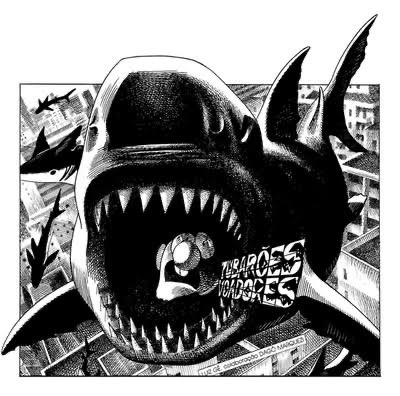
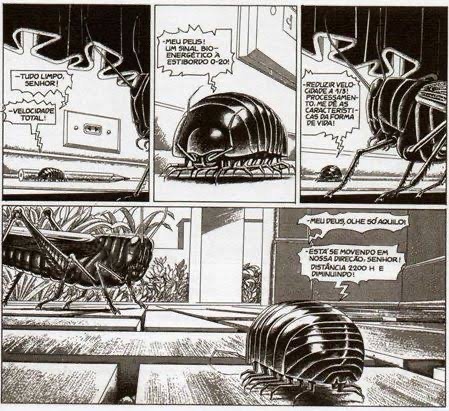
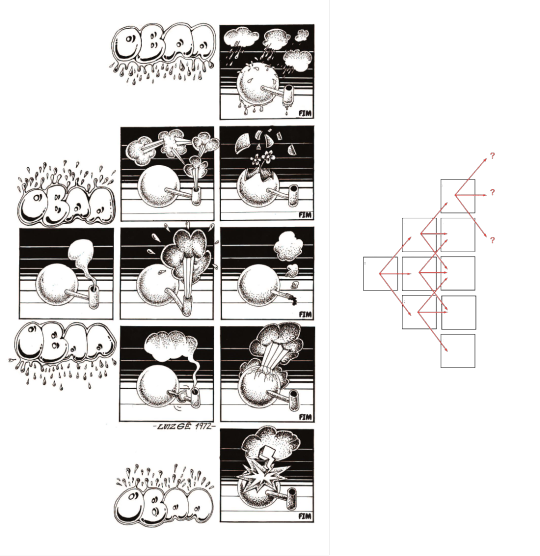

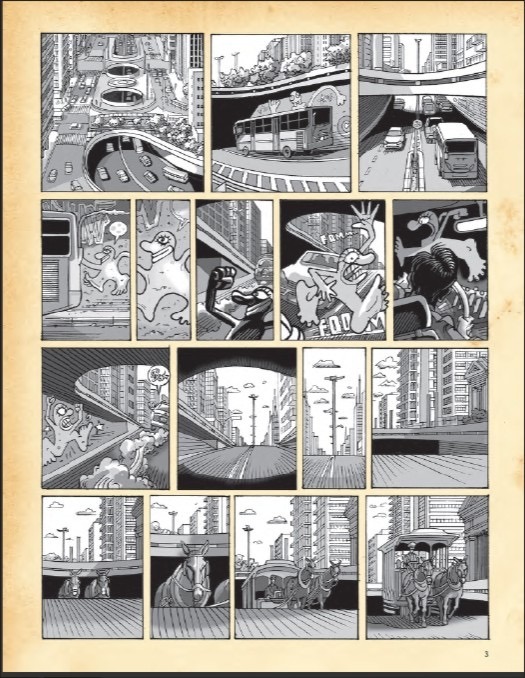
Nicole Claveloux
She is a French surrealist illustrator who has worked on several underground comic books. While there have been several surrealist women, throughout the 20th century, few are remembered on the same level as their famous males counterparts such as Salvador Dali for example.
Mixing the figurative with abstract, the everyday with the manifestations of the mind and psychoanalytic issues, she made her name among the greats of the French comic books in the 1970s, using the aesthetic of her biggest influence, the German painter Max Ernst.
In the 60s the comic artist had enormous influence from psychedelic art.
As well by the drawings of Czech German illustrator Heinz Edelmann, art director of the Beatles animation Yellow Submarine. In addition to the collages of former Monty Python member Terry Gilliam.
For few years, Claveloux contributed short comics to the French magazine Metal Hurlant ( an counterpart of the English marine Hevy Metal), which featured women features exclusively.
During this period working in Metal Hurlant, she made comics very focused on her personal interest. Having a very vivid color palette, besides in many of her comics, she doesn't use dialogue, often focusing on the characters' expressions.
And just like in Heavy Metal, many of his works were counter-cultural. Using violence, sex and drugs as the main theme. The experimentation and styling was something very present in the 70s comics as it was a time of change and revolution, trying to remove the censorship of the comics, and explore other themes.
Something that catches my attention in Nicole’s drawings is the exacerbation of eroticism. In her adorable, multicolored drawings, there is an exploration of erotic and fetishistic imagery. Nicole takes a chance and some times criticized in using a children’s imagination with genitalia, testing our sense of humor.
As the psychedelic movement, had come to an end. New references came to her field. Using the contrast between black and white is highlighted, as well as the presence of hachures and more naturalistic lighting.

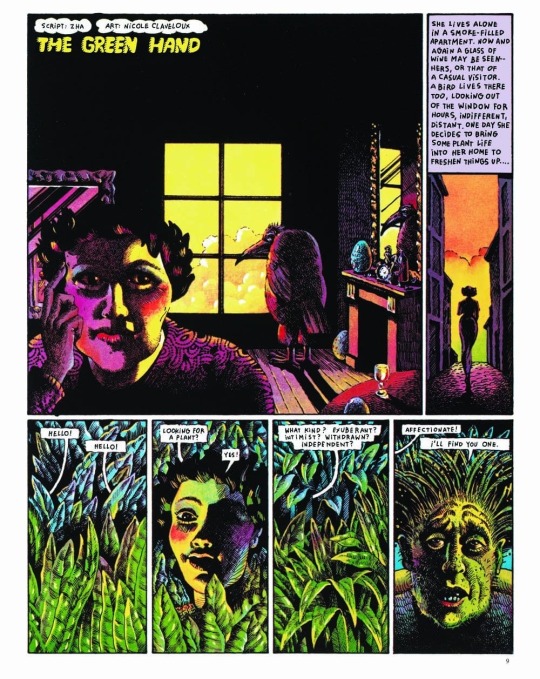
Yuichi Yokoyama
Yuichi Yokoyama was born in Miyagi, Japan in 1967.
Always interested in arts, he knew since an early age that he always wanted be a illustrator. He went to the university of fine arts in Nagasaki. But after studying oil painting and other techniques, he thought that drawing manga was the style that suited his form of expression the most.
According to him, he felt “ emptiness in drawing a single picture”. He wanted to draw what would happened after that, instead of just one expression including portraits and sculptures.
He produces works that do not have lines or clear stories, featuring lines and onomatopoeia with a sense of speed, and unique characters using the style called the “Neo Manga”.
It is highly evaluated not only in Japan but also overseas, and the manga is published in Europe and United States. He says he likes to record his conversations with friends and draw while listening to them.
Neo Manga, has been highly acclaimed as a work that redefines the stereotypes of manga, but it is said that if was completely different from the original aim.
He participated in several exhibitions around the world showing his monochromatic works, which showed a different approach to manga. Focusing much more on the movement of characters and their expressions to tell a story, than simply using text, which seems to boring the viewer in his opinion.
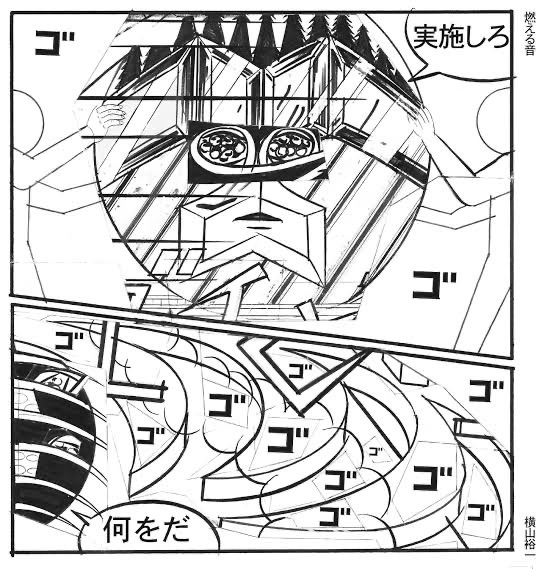
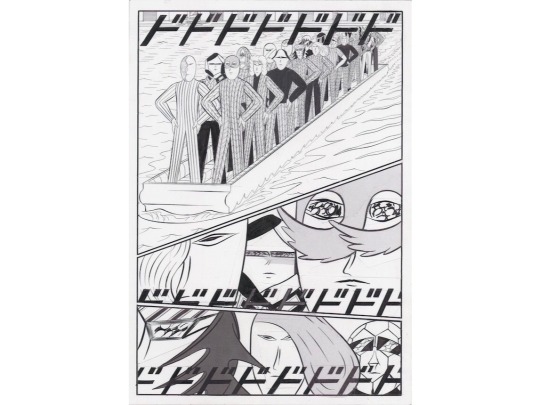
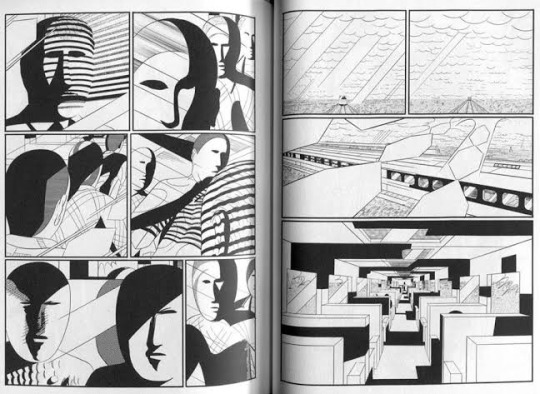

Chris Ware
Is a cartoonist and comic book artist, who is acclaimed for presenting narrative illustrations in a form and style very different from traditional comic book.
Franklin Christenson Ware was born in 1967, in Nebraska, USA.
He grows up with the absence of a father figure, his biological father left his family when Chris was one year old and until he had reached adulthood he would not have any contact with him again.
Because his mother worked as a reporter and editor at a newspaper and his grandfather also worked as a sportswriter, Ware was able to get in touch with the world of press. In fact, his grandfather was one of the pioneers in introducing Peanuts strips in newspaper and because of that, he introduced Chris to the comic strips and started reading as much as he could.
He is mainly recognized for his work Jimmy Corrigan: The Smartest Boy on Earth, with which he won the Guardian First Book Award and was selected as one of the 100 best books of the decade by the Times of London in 2009.
Ware’s unique perspective on the language of his works was seen early in his career. The author’s first independent publications, was during his years in the college of arts at the university of Texas, drew attention of Art Spielgelman, author of the classic Maus.
Chris Ware is undoubtedly a fascinating comic book author. It’s because we find ourselves with one of the few authors who managed to bring together comics, illustration and design within a style and a way of doing things that works for him to create his comics.
The influences of Ware, was Windsor McCay with his comic strip Little Nemo in Slumberland, Richard Outcault with his strip The Yellow Kid, and of course Charles Schulz, author of Peanuts.
It was these authors who left a strong imprint on Chris Ware and who showed him that on comic page the text and the image merge and that the composition of the vignettes on the page can be manipulated by the author at will. In order to achieve the desired effect.
Also the countercultural movements in the 1960s was also a big influence on him. Hippie movement, Vietnam war, student protests, experimentation with drugs, influence of oriental philosophy and music.
Most of his characters share similar characteristics, such as the lack of a father figure, discouragement, loneliness, lack of communication, insecurity, and lack of affectivity.
Towards the way that Ware works. He limit himself on only using the computer for coloring and discard it when it comes to the use of fonts. Ware prefers to make his own fonts by hand, thus becoming a great lettering artist.
He prefers to start by drawing with the first vignette and see what paths the process has taken him on when he reaches the last one.
The break with the conventions of the comics in that it is hierarchized by the logical sequence of the vignettes. Instead, Ware in many of its pages diversifies the timelines and events that a character and everyone around him can undergo.
Multiple frames of varying sizes and shapes are packed into each page; among the bold black contours are startling shifts in scale and points of view.
Chris Ware is someone who, despite sticking to traditional techniques when dealing with the blank page, dares to experiment with new technologies in order to find new ways of telling a story.
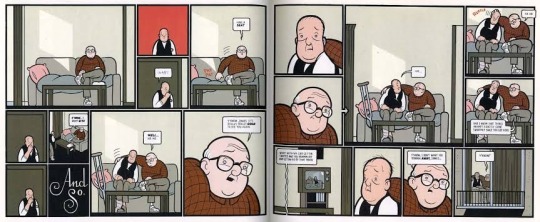
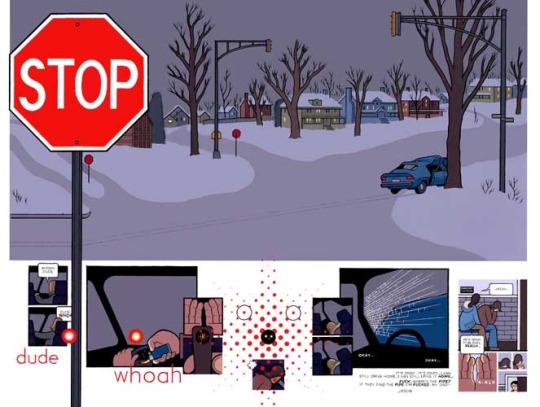
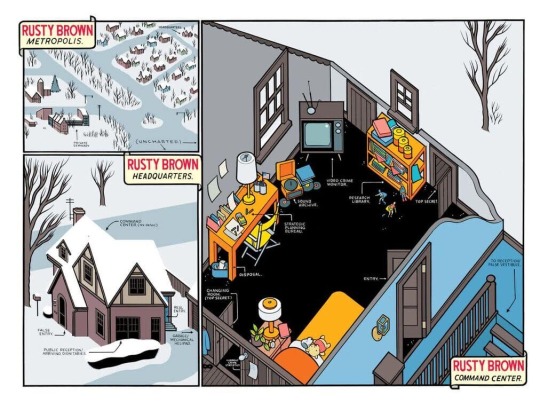

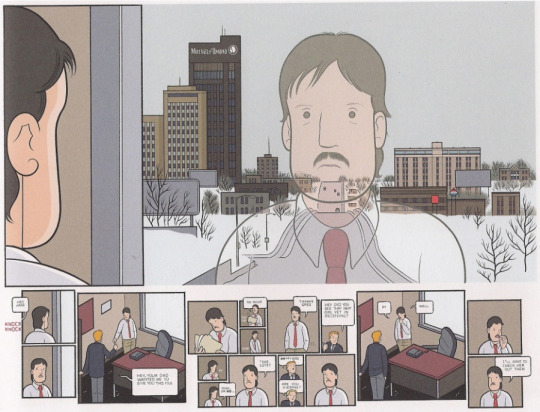
John Romita jr
John Romita jr. is an American comic book artist, known for his extensive career in Marvel Comics and DC Comics since the 70s to the present day. He is the winner of both the Inkpot Prize, like the Eisner award. He worked with many different characters, like; Spider man, Iron man, Daredevil, Batman, Superman, Kick Ass and many more.
Son of John Romita sr., one the most famous Spider-Man artists since the 1960s, John Romita Jr. he started his career early. At the age of 13, he proposed the creation of a character to Stan Lee, who later was introduced as Prowler in The Amazing Spider-Man #78.
He began drawing sketches for reprint covers, until debuting with six page story in the Amazing Spider-Man #11 in 1977.
During his run at Spider-Man, Romita’s art style resembled many other artists of that time, like his father for example, as well Jack Kirby, who inspired a whole generation of comic book artists.
Romita stayed on Amazing Spider-Man until 1987. Then he started working at a Daredevil run, and Romita’s style began to evolve from that more traditional Marvel style to something different. His style got squarish. It was more angular, more stylistic. He mentioned, that he got that style thanks to Frank Miller’s influence.
Romita Jr, brought that style back to Spider-Man in the mid-90s, where he had a run of 140 issues, becoming the artist who worked the most with the character.
John Romita Jr. was one of my biggest inspirations when I was younger. I've always liked Spider-Man a lot, and I've always collected many of his magazines. John Romita's drawing is very different from a traditional style, and I think that was what caught my attention. Because in the world of superhero comics, the artistic style ends up being repeated a lot. Always exaggeratedly strong and beautiful people. Romita's style seems to me to be more cartoony. And I say this in a good way, because I find his characters extremely expressive and unique. His style doesn't belong to a specific period, like many artists from the 90's who were forgotten because they didn't knew how to adapt themselves on the following decades.
He also knows how to build an action scene like no one else. Always investing in close ups, and showing the specific movement that the character is doing in a very natural way. He always knows what fits into the specific scene, making frame transitions very different.
John Romita has been working since the 70s, and he never stopped. He is always been in some different title in both Marvel and DC.
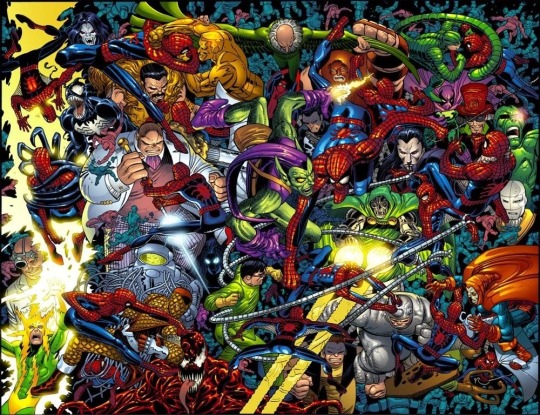
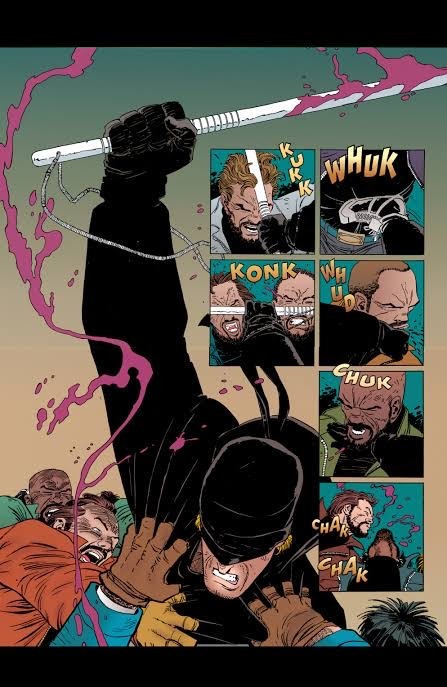
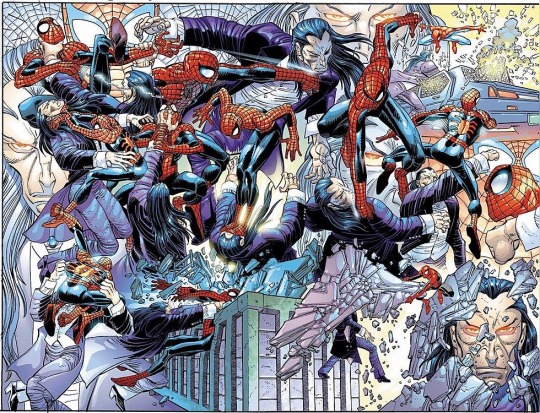
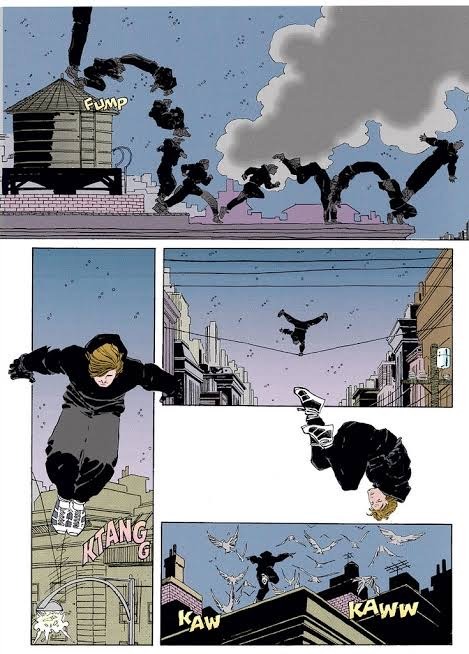
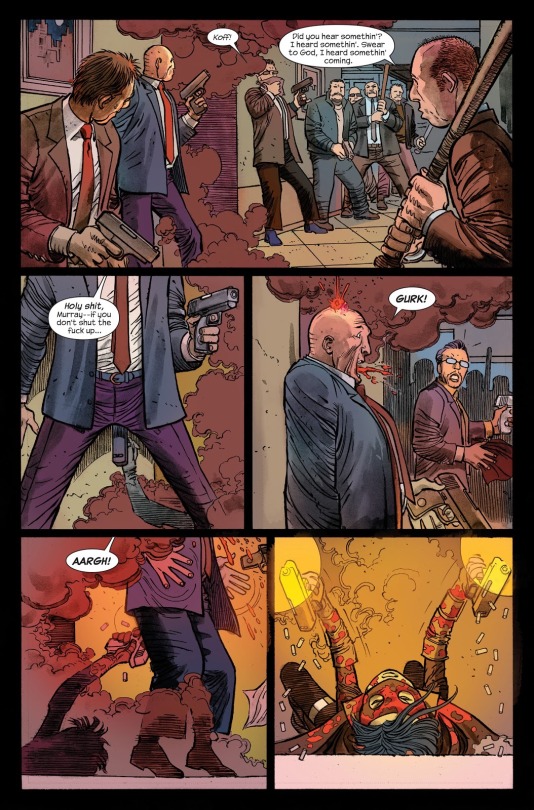
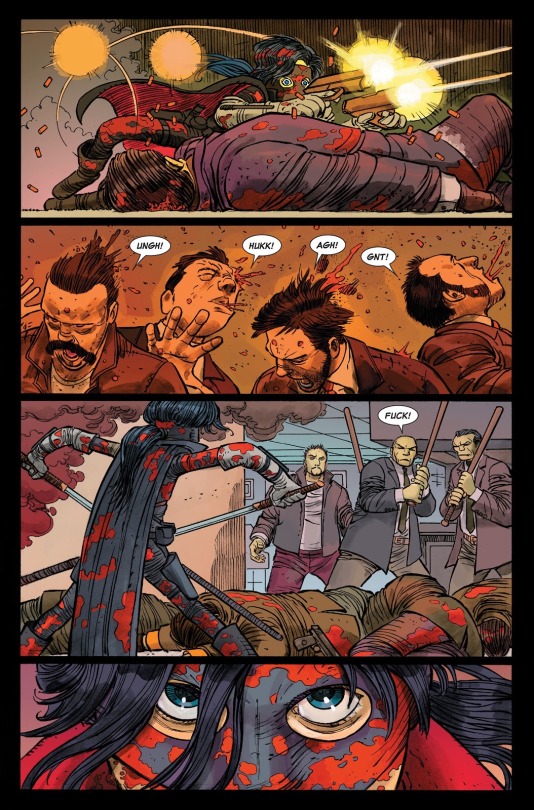
Scott McCloud
Scott McCloud is an American cartoonist and comic theorist. He is best known for his nonfiction comic books: Understanding Comics, Reinventing Comics and Making Comics, all of which also use the comic book medium. And also one of the first artists, to promote Webcomics as different variety of comic, with different possibilities than its the printed.
Born in 1960, in Boston, United States. In 1984 he published his first comic Zot !, And later another comic called Destroy !, a parody of fight scenes from superhero comics; The new adventures of Abraham Lincoln, a comic created with a mixture of digital graphics and traditional drawings; also working at some Superman comics, like: “Superman Adventures” and “Superman Strength”.
But he is best known as a comic theorist after the 1993 publication of his essay Understanding Comics: The Invisible Art.
Originally published in 1993, the theoretical study on the universe of comics in all its context provides a long historical journey (from the foundation that gave rise to comics) to establish and legitimize the means for art production.
McCloud goes back to the dawn of civilization when cavemen first began to develop what he defines as art. Not to mention the full range of what characterizes comic books- from the American ‘comics’ market to the Japanese ‘manga’ passed through the French- Belgian market (like Tintin, Asterix and Lucky Luke). And of course, it goes further, entering in concepts of iconography, structures and forms of visual communication.
I've had this book with me for a while. And he helped me a lot in terms of how to put together a comic.
Last semester I did a very amateur one, which was lacking in a traditional comic book structure.
So I ended up finding this book, and I started to have a theoretical notion, in terms of passing, the use of angles, and trying to make it clearer to the reader what is happening.
The author exposes a multitude of complex arguments with good humor and a fluid structure which is really hard to see as a theoretical book
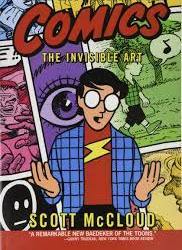
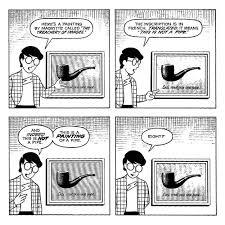

Asterios Polyp
David Mazzucchelli made his career as an illustrator, as is customary in the industry, for both Marvel and DC, working on Frank Miller’s iconic series Batman: Year 1 and Daredevil: Born Again. Later, he stopped working only in illustration and began to publish anthologies with stories of his own. However, it was only in 2009 that the comic artist fully demonstrated what he was capable of, when he published the graphic novel Asterios Polyp.
Asterios Polyp is also the name of the protagonist, a misogynist and acid architect. Asterios projects are highly awarded, but none of this projects were actually built. He lives in the universe of abstract ideas, protected from the reality of human experience behind his own arrogance. But after a Lightning causes a fire that devastates his apartment, Asterios finds himself homeless and aimless.
Asterios wanders around at dawn accompanied by the story’s narrator, his stillborn twin brother, Ignazio. Thus begins the journey of the protagonist who is forced to radically change his life.
Mazzucchelli manages to build a complete character in his aesthetic narrative, which is an interesting thing he did, in that he didn't have to rely entirely on the text.
Unit various types of “styles” of drawing and writing, forms to reveal the universe of the character without losing his style.
One of the biggest influneces for me in terms of style , is a specific moment when Asterios and his girlfriend Hana are having a discussion, and Asterios turns into a blue, perfect geometric character (implying his architectural nature) and Hana turns into a sketchy red character. this sketchy look is very descriptive in that it implies the looseness and passion of Hana's character.
The way it was made, using these hatches in red and even pinky in some moments of the story, was a style that I really liked when building the bottle. Trying to do a red shaded style just like Mazzucchelli did.
In addition to the drawing style itself, the framings themselves, which are made, often focusing the "camera" on important moments, as if it were really close ups from a movie, in addition to the open plans showing the entire environment, often depicting what is going .
A very personal work by Mazzucchelli, which has been planned for a decade, where each frame, each character with a different style has a specific meaning, is a purely visual work, but by no means is the text weak. It's just not Mazzucchelli's focus
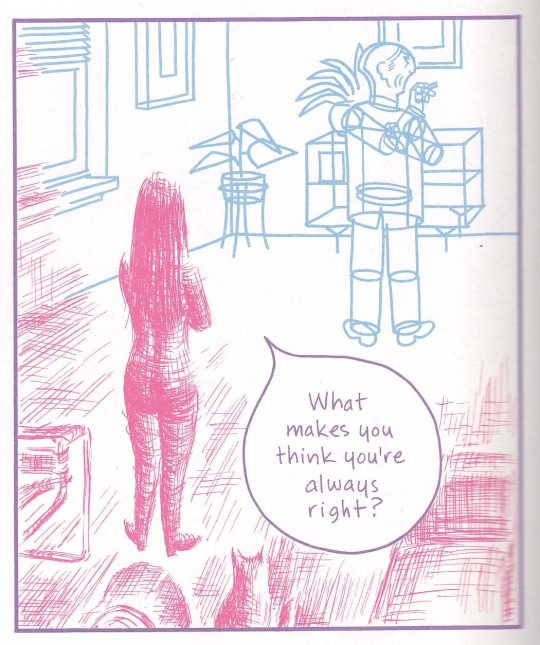

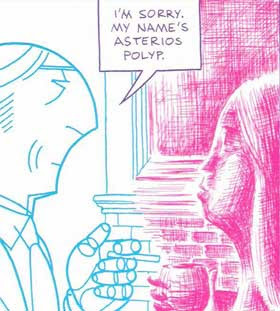

2 notes
·
View notes
Text
Legends of Czech Cinema: Jaromír Šofr, Cinematographer
Legends of Czech Cinema: Jaromír Šofr, Cinematographer
He shot Jiří Menzel’s Oscar-winning Closely Watched Trains and worked with key figures of the Czechoslovak New Wave including Jan Němec, Evald Schorm and Věra Chytilová. We spoke to legendary cinematographer Jaromír Šofr about his life in movies…
Q: Some of our readers will have seen “cinematographer” in movie credits but may not fully understand what one does. What does a cinematographer bring…

View On WordPress
#cinematography#Czech New Wave#Evald Schorm#Jaromír Šofr interview#Jiri Menzel#Legends of Czech cinema#Vera Chytilova
5 notes
·
View notes
Audio
The science fiction thriller film SENSATION, which is available on Amazon Prime Video beginning April 16th, 2021, focuses on a group of people with special genetic traits that will grant them unique abilities if they are turned on.

Andrew is on a quest to uncover hidden truths about his family history. He unknowingly provides a top-secret agency with his DNA in order to discover his ancestry. It’s revealed that not only does Andrew have dormant special powers within his DNA but his grandparents previously participated in a government program that tried to influence human senses. He reluctantly joins the program, doing so in hopes of keeping his mother safe. He soon discovers he is not alone. Joining him at the grand research facility in the British countryside is a group of other individuals with superhuman skills. The agency tells Andrew that he’ll be able to receive information based on his senses and furthermore be able to control the senses of others. As the training unfolds, Andrew starts to struggle with the program as his emotions are continually being triggered. Strange things start to happen when he is placed in several bizarre scenarios and he begins to question his reality.

Director, Producer, Co-Screenwriter, & Co-Cinematographer Martin Grof was born in Czechoslovakia, made his first film at the age of 17 while attending High School in Vienna, Austria. Shortly thereafter he began working at the national Slovak TV, STV, and by the age of 20 became a professional cameraman. He went on to direct music videos for artists in the Czech and Slovak Republic, and at the age of 24 began to direct live television shows for STV. His first film, EXCURSION, was programmed by numerous film festivals and earned many nominations and awards. Martin has his own production company GROFilm and I spoke with him from his office in London about his science fiction thriller SENSATION.
Music for the interview is from the score for SENSATION, provided by the composer Neil Myers
#film news#movie news#interview#martin grof#sensation#amazon prime video#neil myers#joseph mauceri#joseph b mauceri#science fiction#thriller
1 note
·
View note
Photo

Czech Woman A Day (714) : Klára Belicová (cinematographer, camera operator)
1 note
·
View note